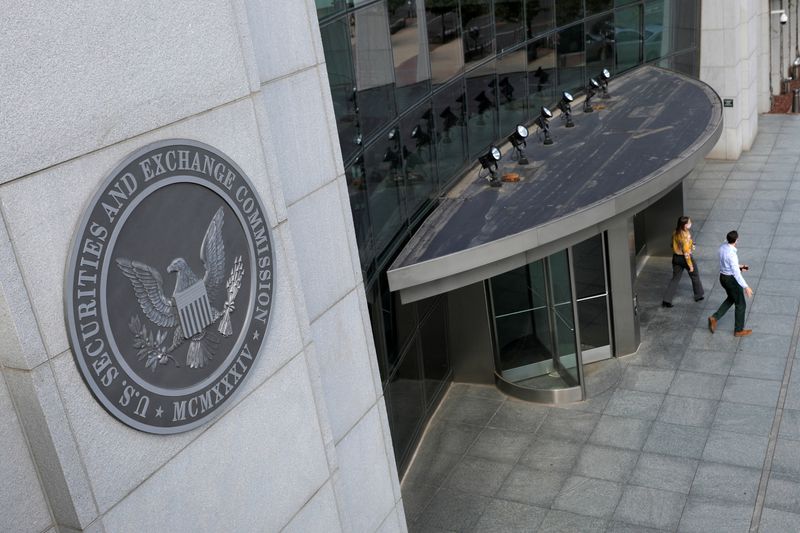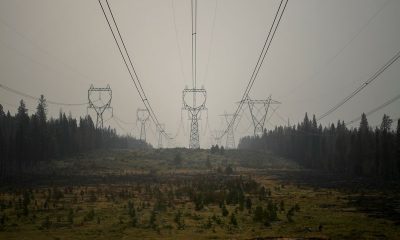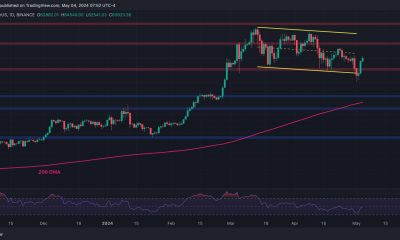Economy
US Treasury market braces for overhaul as SEC adopts new clearing rules


© Reuters. FILE PHOTO: People exit the headquarters of the U.S. Securities and Exchange Commission (SEC) in Washington, D.C., U.S., May 12, 2021. REUTERS/Andrew Kelly/File Photo
By Douglas Gillison, Laura Matthews and Carolina Mandl
NEW YORK/WASHINGTON (Reuters) – Wall Street’s top regulator on Wednesday adopted new rules aimed at reducing systemic risk in the $26 trillion U.S. Treasury market by forcing more trades through clearing houses, while offering some concessions following industry pushback.
The five-member U.S. Securities and Exchange Commission voted 4-1 on Wednesday to advance the new rules, proposed over a year ago as part of a broader effort to fix structural issues regulators believe are causing volatility and liquidity problems.
A central clearer acts as the buyer to every seller, and seller to every buyer, guaranteeing trades in case either party defaults.
“Today’s final rules, taken together, will reduce risk across a vital part of our capital markets in normal times and stress times. That benefits investors, issuers, and the markets connecting them,” said SEC Chairman Gary Gensler in prepared remarks.
The reforms mark the most significant changes to the world’s largest bond market, a global benchmark for assets, in decades.
“This is going to significantly change the Treasury market landscape,” said Angelo Manolatos, macro strategist at Wells Fargo Securities, citing “a lot of costs.”
The new regulations could also increase systemic risks by concentrating risk in the clearing house, he added.
The draft rule, which applied to cash Treasury and repurchase or “repo” agreements, was partly aimed at reining in debt-fueled bets by hedge funds and proprietary trading firms. These firms have accounted for a growing chunk of the market over the past decade but are lightly regulated, allowing few insights into their activities.
The final rule broadens the scope of which transactions must be cleared and will require clearing houses in the Treasury markets to ensure that their members clear repo and reverse repo transactions, Gensler said in prepared remarks.
That would sweep in more hedge fund-related trades. Most hedge fund activity in repo markets – where banks and other players such as hedge funds borrow short-term loans backed by Treasuries and other securities – is done bilaterally between brokers and customers.
In a nod to worries expressed by industry groups, SEC officials told reporters ahead of Wednesday’s vote they had softened some of the original proposals.
Notably, purchases and sales of Treasuries between broker-dealers who are members of clearing houses and hedge funds or levered accounts need not be cleared. Officials said central clearing in the “repo” market would largely cover related risks.
“The SEC actually went a little soft,” said Tom di Galoma, managing director & co-head of global rates trading at BTIG, noting the SEC stopped well short of a general clearing mandate.
Overall, just 13% of Treasury cash transactions are centrally cleared, according to estimates in a 2021 Treasury Department report, referring to the outright purchase and sale of those securities.
Advocates for central clearing, including the SEC, say the rule makes markets safer, while critics say it adds costs and should allow time to be phased in.
“It is critical that policymakers do not blindly tinker with (the Treasury market’s) underpinnings,” wrote Jennifer Han, head of Global Regulatory Affairs at the Managed Funds Association in a Dec. 4 letter.
To safeguard trades, clearers collect collateral from counterpartes. Under the new rule, central clearing agencies would also have to keep the collateral for their members separate from that held on behalf of their members’ customers.
Industry practice suggests that a large share of hedge funds trading in repo markets put up no haircut, indicating that they are fueling activity using enormous amounts of cheap debt.
Another key industry issue is the implementation timeframe. Clearing houses will have until March 2025 to comply with provisions on risk management, protection of customer assets and access to clearance and settlement services.
Their members will have until December 2025 to begin central clearing of cash market Treasury transactions and June of 2026 for repo transactions.
STEADYING THE MARKET
The rule is part of a series of reforms designed to boost Treasury market resilience following liquidity crunches. In March 2020, for example, liquidity all but evaporated as COVID-19 pandemic fears gripped investors.
The DTCC said in a comment letter that during times of market stress, participants submit a greater volume of transactions for clearing to limit their credit risk.
Jason Williams, director of U.S. rates research at Citi, said there were benefits to having additional margin in the system but balancing that are higher costs.
“It’s going to be an interesting juggling act,” he added.
Economy
Russian central bank says it needs months to make sure CPI falling before rate cuts -RBC


© Reuters. Russian Central Bank Governor Elvira Nabiullina attends a news conference in Moscow, Russia June 14, 2019. REUTERS/Shamil Zhumatov/File Photo
MOSCOW (Reuters) – Russia’s central bank will need two to three months to make sure that inflation is steadily declining before taking any decision on interest rate cuts, the bank’s governor Elvira Nabiullina told RBC media on Sunday.
The central bank raised its key interest rate by 100 basis points to 16% earlier in December, hiking for the fifth consecutive meeting in response to stubborn inflation, and suggested that its tightening cycle was nearly over.
Nabiullina said it was not yet clear when exactly the regulator would start cutting rates, however.
“We really need to make sure that inflation is steadily decreasing, that these are not one-off factors that can affect the rate of price growth in a particular month,” she said.
Nabiullina said the bank was taking into account a wide range of indicators but primarily those that “characterize the stability of inflation”.
“This will take two or three months or more – it depends on how much the wide range of indicators that characterize sustainable inflation declines,” she said.
The bank will next convene to set its benchmark rate on Feb. 16.
The governor also said the bank should have started monetary policy tightening earlier than in July, when it embarked on the rate-hiking cycle.
Economy
China identifies second set of projects in $140 billion spending plan


© Reuters. FILE PHOTO: Workers walk past an under-construction area with completed office towers in the background, in Shenzhen’s Qianhai new district, Guangdong province, China August 25, 2023. REUTERS/David Kirton/File Photo
SHANGHAI (Reuters) – China’s top planning body said on Saturday it had identified a second batch of public investment projects, including flood control and disaster relief programmes, under a bond issuance and investment plan announced in October to boost the economy.
With the latest tranche, China has now earmarked more than 800 billion yuan of its 1 trillion yuan ($140 billion) in additional government bond issuance in the fourth quarter, as it focuses on fiscal steps to shore up the flagging economy.
The National Development and Reform Commission (NDRC) said in a statement on Saturday it had identified 9,600 projects with planned investment of more than 560 billion yuan.
China’s economy, the world’s second largest, is struggling to regain its footing post-COVID-19 as policymakers grapple with tepid consumer demand, weak exports, falling foreign investment and a deepening real estate crisis.
The 1 trillion yuan in additional bond issuance will widen China’s 2023 budget deficit ratio to around 3.8 percent from 3 percent, the state-run Xinhua news agency has said.
“Construction of the projects will improve China’s flood control system, emergency response mechanism and disaster relief capabilities, and better protect people’s lives and property, so it is very significant,” the NDRC said.
The agency said it will coordinate with other government bodies to make sure that funds are allocated speedily for investment and that high standards of quality are maintained in project construction.
($1 = 7.1315 renminbi)
Economy
Russian central bank says it needs months to make sure CPI falling before rate cuts -RBC


© Reuters. Russian Central Bank Governor Elvira Nabiullina attends a news conference in Moscow, Russia June 14, 2019. REUTERS/Shamil Zhumatov/File Photo
MOSCOW (Reuters) – Russia’s central bank will need two to three months to make sure that inflation is steadily declining before taking any decision on interest rate cuts, the bank’s governor Elvira Nabiullina told RBC media on Sunday.
The central bank raised its key interest rate by 100 basis points to 16% earlier in December, hiking for the fifth consecutive meeting in response to stubborn inflation, and suggested that its tightening cycle was nearly over.
Nabiullina said it was not yet clear when exactly the regulator would start cutting rates, however.
“We really need to make sure that inflation is steadily decreasing, that these are not one-off factors that can affect the rate of price growth in a particular month,” she said.
Nabiullina said the bank was taking into account a wide range of indicators but primarily those that “characterize the stability of inflation”.
“This will take two or three months or more – it depends on how much the wide range of indicators that characterize sustainable inflation declines,” she said.
The bank will next convene to set its benchmark rate on Feb. 16.
The governor also said the bank should have started monetary policy tightening earlier than in July, when it embarked on the rate-hiking cycle.

 Forex2 years ago
Forex2 years agoForex Today: the dollar is gaining strength amid gloomy sentiment at the start of the Fed’s week

 Forex2 years ago
Forex2 years agoHow is the Australian dollar doing today?

 Forex1 year ago
Forex1 year agoUnbiased review of Pocket Option broker

 Forex2 years ago
Forex2 years agoDollar to pound sterling exchange rate today: Pound plummeted to its lowest since 1985

 Cryptocurrency2 years ago
Cryptocurrency2 years agoWhat happened in the crypto market – current events today

 World2 years ago
World2 years agoWhy are modern video games an art form?

 Stock Markets2 years ago
Stock Markets2 years agoMorgan Stanley: bear market rally to continue

 Economy2 years ago
Economy2 years agoCrude oil tankers double in price due to EU anti-Russian sanctions

































